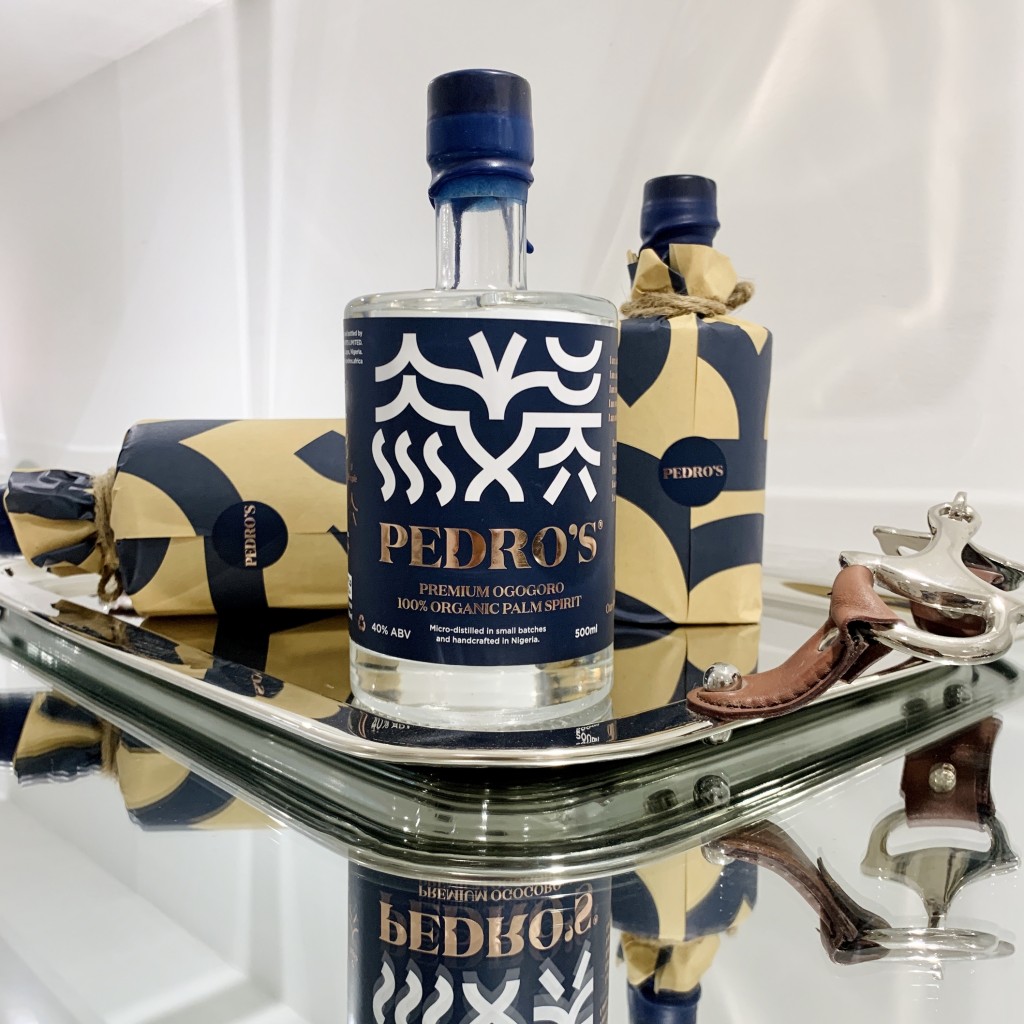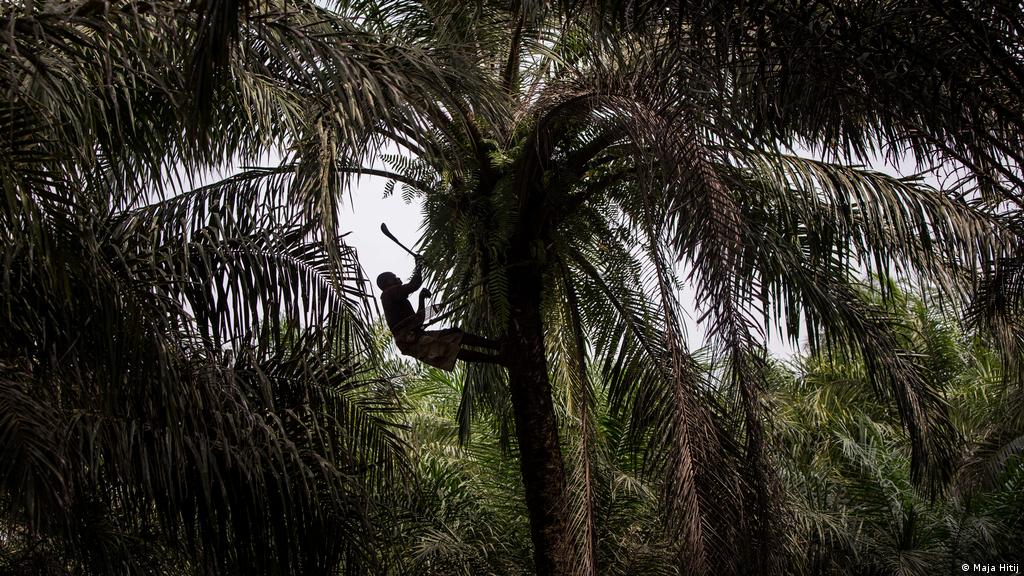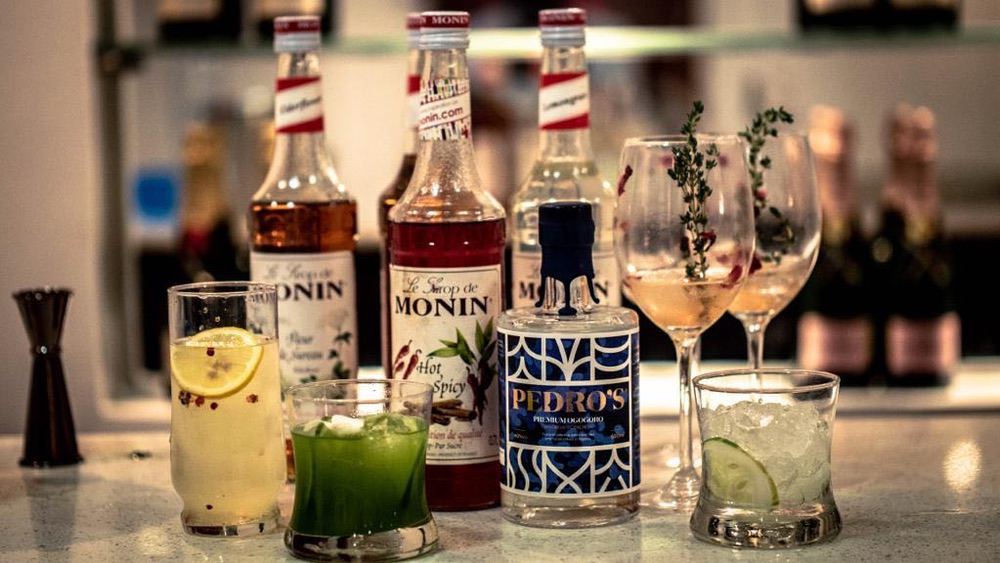‘Ogogoro’.
The name, for the average Nigerian, conjures up images of an illicit trade conducted under the cover of darkness; of tiny sachets or bottles with funny names and current street slangs, sitting snugly in the hands of people that are often described as belonging to the lower echelons of the society.
Illegal, dirty, poisonous. All these are adjectives that have been associated with ogogoro, qualifiers that are false and rooted in our colonial history


Ogogoro is an alcoholic beverage like rum or tequila. The only difference? It originated in Africa
“Ogogoro is a very dirty word in Naija culture today, and has been for some time,” says Lola Pedro of Pedro’s Ogogoro. “Firstly it was criminalised by the British: when the colonisers came, they needed to sell British, or London dry gin [to us]. So the first thing they had to do was vilify our own products, our own indigenous spirit which is not a gin, it is a palm spirit, it’s ogogoro. And they did that very successfully.”
If you were to go online today in search of the definition of ogogoro, most of the results will refer to the alcoholic beverage as a local gin indigenous to West Africa. Armed with this ‘knowledge’, we thought it best to work with a home brand in celebration of this year’s World Gin Day. And so, imagine our surprise when we reached out to the co-founder of Pedro’s Ogogoro, Nigeria’s first formally distilled ogogoro and were told:
“Ogogoro is a palm spirit from palm wine and gin is a grain spirit that is infused in juniper berries. So calling ogogoro ‘gin’ is a complete misnomer.”
If this is the only difference between both drinks, why is it generally believed that the former is a cheaper, inferior kind of the latter?
[Due to colonisation] “Ogogoro never developed or evolved. And it was made very informally, almost similar to moonshine. Oftentimes it would be adulterated especially the kind of stuff you would drink in the cities and you’ll always tend to see low-level people in society consuming ogogoro. Think of the mama on the side of the road with the sachets. Most of that is actually not ogogoro but that’s what we call it. Because it’s just cheap, synthetic ethanol mixed with aromas and different colourants and flavourants. [sic] But now, the word ‘ogogoro’ has become a catchall phrase for bad alcohol, and for this reason, it’s really been demonised and ostracised,” explains Lola.


Ogogoro sits somewhere between a rum and a tequila actually.
“And this is actually because of the properties of the actual raw materials. We distil from the raffia palm (which is the tree from which we take the sap) … and not from grains steeped in juniper. If you think of tequila, it comes from the agave plant which holds many similarities to the palm. [Ogogoro] is like a lighter, softer tequila or even a rum, which is obviously from sugarcane.”
“When we work with mixologists who are unaware of the historical and cultural context surrounding ogogoro, for example, in Europe; when they want to play around with Pedro’s, they tend to naturally use our spirit in classic rum or tequila cocktails [in place of rum or tequila]. These cocktails are much more befitting of our product and really work in terms of the flavour profile and properties of ogogoro.”
As the world celebrates World Gin Day on June 11, we choose to honour a truly exceptional drink that has suffered so much indignity and has been wrongly called a gin for almost a century now. In celebration of the legendary ogogoro, here are recipes for three truly delicious cocktails, featuring Pedro’s Ogogoro. But don’t take our word for it: go ahead to make a glass – or two – of any of the cocktails below.
Zobogoro
Zobo ingredients
- Zobo leaves (Hibiscus)
- Water
- Dry or Fresh ginger
- Cloves
- 1 Large Pineapple
- Soursop juice
Zobo Preparation.
Peel and dice the pineapple, then set aside. Wash the hibiscus with cold water. Place the washed leaves in a large pot of water and boil for 25mins whilst adding the chunks of pineapple, ginger and cloves. Sieve out the extract into a bowl and leave the drink to cool. Add the soursop juice, then refrigerate the drink.
Cocktail Ingredients.
- 150ml Zobo
- 50ml Pedro’s
- Ice
Garnish: Fresh mint leaves
Steps.
In a ratio of 1:3, Pour Pedro’s and the zobo mixture into a cocktail shaker, with ice and shake well for 20 seconds.
Serve in a cocktail glass and garnish with mint.
Sapele Sour


Cocktail Ingredients.
- 60ml Pedro’s
- 40ml fresh lemon/lime juice
- 20ml Sugar Syrup
- 1 egg (optional)
- Ice
Garnish: Orijin bitters
Steps
Add the Pedro’s, lemon/lime juice, sugar syrup, and egg white into a cocktail shaker. If using the egg white, dry-shake for 30 seconds without ice, then add the ice and shake again until well-chilled. Otherwise, shake all ingredients together with ice. Strain into a rocks glass or a coupe and garnish with 3 or 4 drops of Orijin bitters.
PPC (Pedro’s Piña Colada)
Cocktail Ingredients
- 60ml Pedro’s
- 45ml cream of coconut
- 45ml pineapple juice
- 15ml lime juice, freshly squeezed
- Ice
Garnish: pineapple wedge and leaf
Steps
Add the Pedro’s, cream of coconut and pineapple, and lime juices to a shaker with ice and shake vigorously for 30 seconds.
Strain into a chilled hurricane glass over ice and garnish with the pineapple wedge and leaf.
About Pedro’s Premium Ogogoro
For the increasingly discerning imbiber, Pedro’s premium ogogoro, is a batch distilled, 100% organic palm spirit. Handcrafted in Nigeria’s riverine communities and then refined in Lagos, Pedro’s is spearheading a new African narrative, audaciously unsurpassable and unapologetically local.
